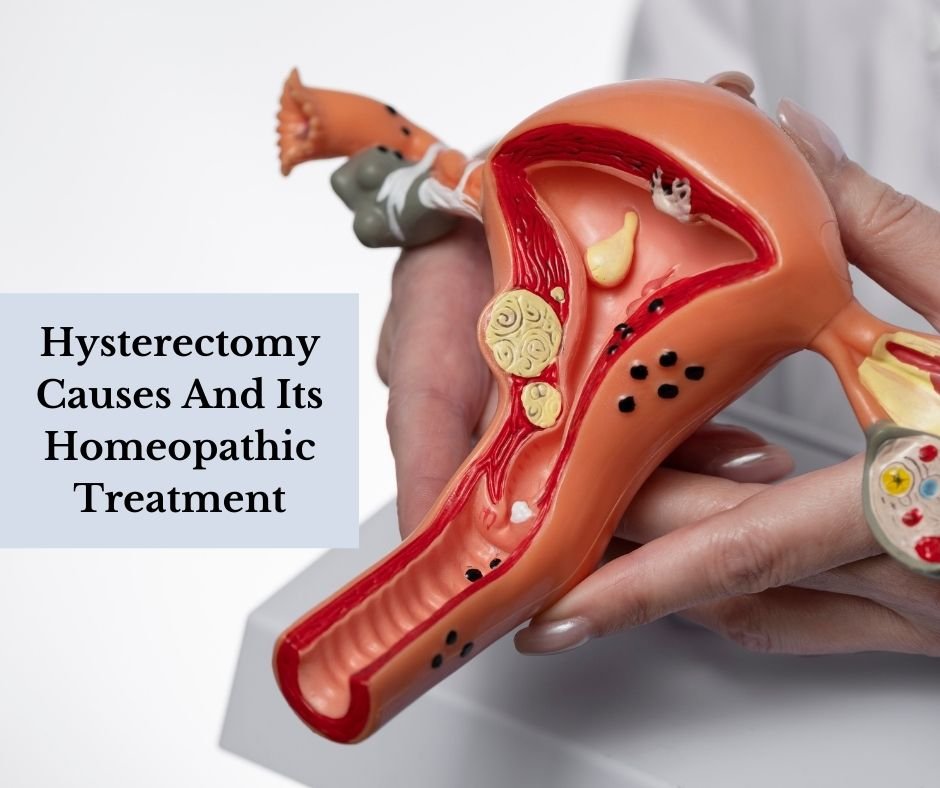What is a Hysterectomy?
A hysterectomy is a surgical procedure to remove a woman’s uterus. It is usually performed to treat various medical conditions like uterine fibroids, endometriosis, or cancer. Depending on the reason, a hysterectomy may involve the removal of the entire uterus, and in some cases, the ovaries and fallopian tubes. After a hysterectomy, menstruation stops, and it becomes impossible for a woman to become pregnant.
Causes for Hysterectomy
A hysterectomy is often considered when non-surgical treatments do not alleviate the symptoms of certain conditions. Some of the common reasons for undergoing a hysterectomy include:
- Uterine fibroids: Non-cancerous growths in the uterus that can cause heavy bleeding and pain.
- Endometriosis: A condition where tissue similar to the uterine lining grows outside the uterus, causing severe pain.
- Uterine prolapse: The uterus slides into the vaginal canal due to weakened pelvic muscles.
- Chronic pelvic pain: Long-term pain in the pelvic region that cannot be managed by other treatments.
- Heavy or abnormal bleeding: Persistent, irregular, or excessive menstrual bleeding that doesn’t respond to other treatments.
- Cancer: Uterine, ovarian, or cervical cancer may require hysterectomy as part of treatment.
- Adenomyosis: The thickening of the uterus lining, which causes pain and heavy bleeding.
Types of Hysterectomy:
- Abdominal hysterectomy: The incision is made in the lower abdomen through which the uterus is removed.
- Vaginal hysterectomy: The uterus is removed through the vagina.
- Laparoscopic hysterectomy: Abdominal hysterectomy is performed by doing multiple tiny incisions through which a camera and surgical instruments are inserted
Symptoms Leading to a Hysterectomy
Several symptoms and conditions can lead to the recommendation of a hysterectomy, including:
- Severe pelvic pain: Pain caused by endometriosis or uterine fibroids.
- Heavy menstrual bleeding: Persistent bleeding that does not respond to medication or other interventions.
- Frequent urination or incontinence: Caused by uterine prolapse pressing on the bladder.
- Chronic fatigue: Due to excessive blood loss from heavy periods.
- Painful intercourse: In conditions like endometriosis or fibroids.
- Back pain and pressure: Caused by the enlarged uterus or uterine prolapse.
Immediate Medical Attention if These Signs :
Noted After Hysterectomy
- Fever or chills
- Severe pain
- Redness or inflammation at the site of incision
- Difficulty in urination or bowel movement
- Shortness of breath
- Chest pain
- Any kind of discharge from the incision
Homeopathic Medicines for Conditions Leading to Hysterectomy
Homeopathy offers natural remedies that aim to address the underlying conditions, potentially preventing the need for a hysterectomy. The treatment is holistic and focuses on balancing the body to relieve symptoms. Below are some common homeopathic remedies after hysterectomy
- Fraxinus Americana: Beneficial for treating uterine fibroids and associated symptoms like heavy bleeding and back pain.
- Calcarea Carbonica: Useful in cases of uterine fibroids or endometriosis where the patient experiences heavy periods, fatigue, and weight gain.
- Belladonna: Effective for treating sudden, intense pelvic pain caused by inflammation or infection.
- Sepia: Helps with uterine prolapse, painful periods, and a sense of heaviness in the pelvic area.
- Sabina: Often recommended for women with heavy bleeding, especially those with a history of uterine fibroids or painful menstruation.
- Pulsatilla: Ideal for irregular menstrual cycles, mood swings, and pain associated with endometriosis.
* Note – Above medicines are for knowledge purpose only. Take the medication only after doctor’s consultation. DO NOT SELF MEDICATE
Homeopathic Treatment for Post-Hysterectomy Care
In addition to helping prevent a hysterectomy, homeopathy can also support recovery and healing after the surgery. Remedies focus on:
- Relieving pain: Remedies like Arnica can help reduce post-surgical pain and bruising.
- Promoting tissue healing: Calendula and Staphysagria aid in wound healing and preventing infections.
- Supporting emotional well-being: Ignatia is often used to manage feelings of grief or sadness after the surgery.
- Boosting overall vitality: Homeopathic remedies aim to restore energy and balance after the procedure.
Prevention of Conditions Leading to Hysterectomy
While a hysterectomy may be unavoidable in certain cases, lifestyle changes and natural treatments may help prevent or delay the need for surgery:
- Maintain a healthy weight: Excess body weight can contribute to hormonal imbalances that lead to fibroids and endometriosis.
- Balanced diet: Eating a diet rich in fruits, vegetables, and whole grains helps maintain hormonal health and prevent the formation of fibroids.
- Regular exercise: Physical activity strengthens pelvic muscles and helps maintain a healthy weight.
- Manage stress: Stress can worsen conditions like endometriosis and fibroids. Relaxation techniques like yoga and meditation may help.
- Monitor menstrual health: Keep track of your menstrual cycle and report any abnormalities to your healthcare provider early.
FAQs
- Where can you experience pain after a hysterectomy?
Pain can be felt in the back, in the abdomen, in the legs, pain while intercourse, pain while urination, and while bowel movements.
- Is it normal to have pain post 6 months after hysterectomy
Pain can be mild and does not interfere with daily activities
- What causes pelvic pain years after hysterectomy
A syndrome is known as residual ovarian syndrome, Pelvic organ prolapse, urinary incontinence, bowel dysfunction, and fistula Formation.
- How can I flatten my stomach after a hysterectomy?
Perform belly tone exercises such as pelvic tilts, knee lifts, leg extension above the ground, and out-to-side movement.







